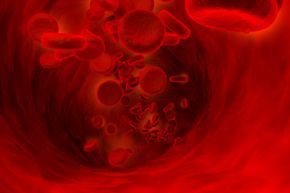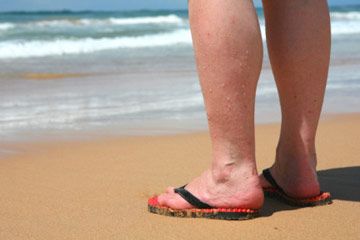Varicose veins -- gnarled, swollen blood vessels visible beneath the skin's surface -- aren't simply a cosmetic issue. Sometimes they can have negative health implications, too. But can a varicose vein really cause a blood clot?
First, let's look at what leads to varicose veins. They occur most often between the knee and foot [source: Mayo Clinic]. They're caused when the tiny valves in the vein that push blood along begin to weaken. As the valves leak, blood that should be headed back up the leg to the heart and lungs instead seeps backward into the vein. This backflow pools in the vein and causes a meandering river appearance.
Advertisement
Superficial varicose veins, like the ones clearly visible beneath the skin, affect about 15 percent of people in the United States [source: USC Center for Vascular Care]. For those 50 and older, however, the rate rises to 50 percent [source: National Institutes of Health]. If the body mistakes a varicose vein's weakened walls for an injury, a blood clot could form. A clot naturally occurs when the blood's protein and platelets -- a type of blood cell -- coagulate at a point of injury to prevent too much bleeding [source: American Society of Hematology].
Even if a clot does occur in a superficial varicose vein, it likely won't break loose and flow through the bloodstream [source: USC Center for Vascular Care]. This is good news because a moving clot could travel to the heart or lungs and block blood flow, causing a dangerous -- and potentially fatal -- problem called pulmonary embolism [source: The Merck Manuals]. However, this type of traveling clot usually stems from varicose veins that form deeper within the leg's muscle. The condition, known as deep vein thrombosis (DVT), affects more than 2.5 million people each year and results in 200,000 annual deaths from pulmonary embolism [source: USC Center for Vascular Care]. In the case of DVT, a clot probably formed in a deeper vein because of an injury, a medical condition or prolonged rest.
Fortunately, if your legs sport visible varicose veins, you may be less likely to be at risk for a clot that involves the deeper leg veins [source: Dorothy M. Davis Heart and Lung Research Institute]. Superficial varicose veins and blood clots are both hereditary conditions; however, you can help prevent each by exercising on a regular basis, because that increases circulation and strengthens the tissue supporting your veins. It's also important to avoid sitting, standing or crossing your legs for more than one hour at a time. Wearing compression stockings that support superficial veins and surrounding tissue can help, too [source: U.S. Department of Health and Human Services].
Read on for lots more information about varicose veins, blood clots and other related conditions.
Advertisement

